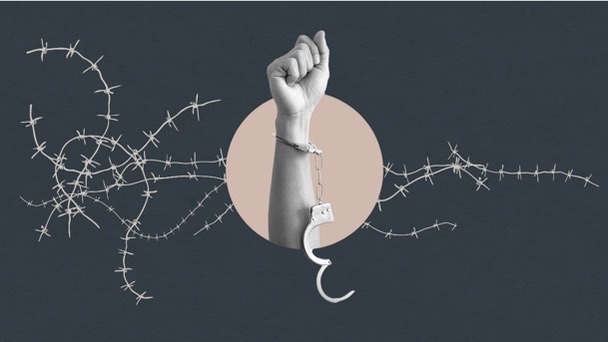
Dr. Sanjay Gupta: What the Science Shows About Cold Plunges
Dr. Sanjay Gupta talks through the benefits and risks of cold plunges, and what the limited science tells us about its impacts on inflammation. Plus,…
Thought Leader: Sanjay Gupta

In a recent survey, a majority of U.S. respondents say they would be proud to work for an employer or patronize a business that hires people with criminal records. And more and more businesses are joining the effort. They know the “what”: What’s often called “second-chance” or “fair-chance” hiring ranges from simply a one-off act of “giving someone a chance” to building defined talent pipelines from correctional institutions and reentry nonprofits.
The “why” is also clear: With 11 million job openings in the U.S. and fewer than 6 million job seekers, the business community is considering every opportunity to tap talent resources wherever they can be found. As a practical matter, the business community cannot overlook the 19 million Americans with felony convictions and the tens of millions with misdemeanors and other interaction with the justice system.
What’s been missing is the “how”: What are the talent practices that ensure positive outcomes for employers and their justice-involved employees? Proponents of second-chance hiring like to cite the handful of formal studies of specific employers: Johns Hopkins Hospital System, the U.S. military’s felony waiver program and a recent trial done by Kelly Services and Toyota. All these studies point to second-chance hires as being more engaged and loyal, a recipe for profitability.
Yet this happy conclusion flies in the face of the experience of many businesses that have tried hiring people with criminal records. For the past decade, I have sought out these businesses. My research was rooted in my professional role overseeing billions in investments assets — and seeking to understand why millions of workers were seemingly missing from the economy, holding back U.S. growth. I ultimately came to understand that a primary problem was the number of Americans with a criminal record — and that critically, this is a problem that could be solved. As a banker who knew that demographics pointed to a looming labor shortage, sharing this solution became a path to supporting the businesses we bank and the communities we serve.
In my interaction with thousands of business owners, including some of the nation’s most prominent second-chance pioneers, I’ve identified three distinct approaches to hiring people with records. Only one of them replicates the positive outcomes highlighted by advocates. In other words, there are many ways to implement second-chance hiring, but only one works.
One inadequate path — what I call the disposable employee model — is commonly found in low-wage/low-skill jobs, for example at certain fast-food restaurants. In this approach, employers hire from this pool of labor because they are low cost: often minimum-wage pay, with compensation costs effectively reduced further by the Work Opportunity Tax Credit and other available training subsidies.
Because cost reduction is the primary motivation, employers are not particularly selective, and these hires subsequently tend to be lower quality and have higher turnover. And because government subsidies for each hire expire, employers have perverse incentives that reduce the appetite for investing in employee retention.
The disposable employee model has worked historically because we’ve had an abundant labor supply and little competition for hiring people with records. As the structural shortage of workers persists, this model may simply fail because it is unable to compete for workers.
The most common approach to hiring people with records is when employers attempt to hire and support justice-impacted workers using the same processes as they do for workers from traditional backgrounds. These companies, which operate across a broad spectrum of industries, are seeking quality hires and low turnover, but their results can fall short with justice-impacted workers.
These programs can fall short for several reasons. Sometimes they fail because recruiting professionals have difficulty determining whether an applicant is job-ready or a good fit for the role. More commonly, this model fails in supporting employees from non-traditional backgrounds. Given that the cost/harm associated with a bad employee is a multiple of the contribution of a good hire, the undifferentiated model is unsustainable and tends to result in companies becoming unwilling to hire people with criminal records.
This model, which combines a process for selecting quality candidates with cost-effective support systems, has been developed by pioneering business owners like Dan Meyer of Cincinnati’s Nehemiah Manufacturing, Mark Peters of Grand Rapids’ Butterball Farms, and Ray Dalton of ReLink Medical in Twinsburg, Ohio.
These employers have recognized that, at least in early years of implementation, it’s difficult to assess candidate fit. Without a traditional track record of success, employers must try to evaluate character traits, such as determination, integrity, coachability, or work ethic. Moreover, it’s difficult for employers to identify the types of prosocial behaviors that bode well for candidate success. Interviewers can’t ask questions, such as: “Are you married to someone without a criminal record?” or “Are you active in a church?” that researchers believe are important determinants of not recidivating.
Complicating the challenge is the fact that the nature of the criminal record may be counterintuitive in identifying the best candidates: Low-level property or drug offenders have higher recidivism rates, often because they may be struggling with addiction, while those who have spent decades in prison due to a crime of violence often have aged and grown.
True second-chance employers have learned to lean on a variety of sources for at least an initial assessment of fit: in-prison training programs, second-chance staffing agencies, work-release employment, or referral pipelines from transitional employment programs, nonprofit workforce organizations, faith-based groups, and government partners.
These employers also have support programs tailored to the needs of the justice-impacted population. Some accommodations, such as offering schedule flexibility to allow an employee to meet with their parole officer, are specifically tied to justice involvement.
Many of these needs, however, are due to gaps created by intergenerational poverty. Employers can access resources from external partners often for no or little cost. Government subsidies for hiring and training this population are available to defray expenses. Examples of successful support systems include post-hire mentorship programs, transportation, housing, and legal support.
The most advanced practitioners of the true second-chance model provide social workers, “navigators,” psychologists, or life coaches that help employees maximize the resources available to support their employment. For example, U.S. Rubber Recycling employs a psychiatric rehabilitation counselor and Nehemiah Manufacturing uses social workers instead of HR professionals. Marcus Sheanshang, the CEO of JBM Manufacturing, told me that one of their best investments was hiring a life coach to help team members reach their goals. Many of the true second-chance employers I’ve spoken with offered resources through employee assistance programs, but came to realize that this population does not have the experience or sophistication needed to access these services.
Employers who pursue the true second-chance model view these supports not as a cost, but as an investment, and one with a very positive return. For example, the 19 Michigan companies that fund The Source, a nonprofit designed to support second-chance and other marginalized workers, report a 219% return on that investment.
Hiring people who are eager to prove they are more than their worst mistake and equipping them to succeed is indeed good business. Employers rarely think of the justice-impacted population as a talent pool worthy of a specific and intentional approach. Lack of knowledge of the justice system, societal biases and socioeconomic divides divert employers away from this successful approach and toward unsuccessful models.
Advocates for hiring people with criminal records have traditionally focused on the considerable societal benefits: safer communities, stronger families, reduced racial disparity in economic outcomes, better use of taxpayer funds. We simply cannot achieve those laudable ends without a business case that can be scaled to the size of the problem. That business proposition must rely on profitability of hiring from this population, and for that to be achieved and replicable, employers should follow the path of the true second-chance model.
Dr. Sanjay Gupta: What the Science Shows About Cold Plunges
Dr. Sanjay Gupta talks through the benefits and risks of cold plunges, and what the limited science tells us about its impacts on inflammation. Plus,…
Thought Leader: Sanjay Gupta
Erika Ayers Badan: Control Is An Illusion
In this episode of WORK Net Net, Erika breaks down why worry feels productive but rarely helps. From the illusion of control to the mental…
Thought Leader: Erika Ayers Badan
Niall Ferguson: Dark Forces of the Twentieth Century
Brian Pawlowski interviews Sir Niall Ferguson on his 2006 book The War of the World. Since 2006, Ferguson has become one of the most influential…
Thought Leader: Niall Ferguson

